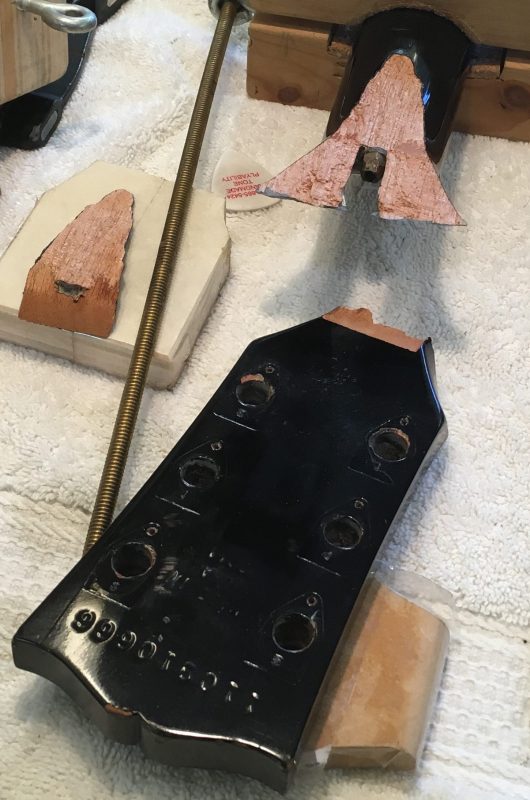Don’t you hate it when the headstock totally snaps off your Les Paul? Yeah, me too – it’s a total bummer. Unfortunately, it’s also really common. Gibson guitars, including the iconic Les Paul model, are infamous for their fragile headstocks and neck joints. In a freak accident, a gust of wind toppled Scott’s guitar off its stand while playing with his band Tycho at Red Rocks.
There are a couple of reasons that Gibsons are prone to this fate. One is that Gibson makes most of their necks from Mahogany, which for a hardwood is actually quite soft. Additionally, their necks are crafted from a single piece of material and include a fairly steep angle where the headstock meets the neck. This places a weak area of grain runout right at the transition of the neck to the headstock, which is where they tend to break. A stronger way to build the neck is to use a scarf joint in this location (a scarf joint is two angled pieces of wood glued together, with the wood grain crossing to create ply). When the neck and headstock are made from separate pieces of wood, the string force is never trying to pull the grain open. It is always pulling in line with the grain. This may seem like a small matter, but when you’ve got 150lbs. of tension continuously pulling on a delicate and vulnerable area of the guitar, every little bit of extra strength helps.
With the headstock back in one piece, we needed to stabilize the area of the neck where the breakage occurred.
To begin, we needed to carve the back of neck to make room for the new wood. We made our marks well past the broken area and removed wood using Japanese razor files and sandpaper.
After the area was smooth and even, we made a Mahogany overlay, with the grain orientation parallel to the headstock. This would bridge the two pieces and support the area where the headstock meets the neck. After much careful fitting, we glued the overlay onto the neck.
With the overlay now attached, we needed to remove the excess wood and shape the back of the neck. Chisel time!
As per Scott’s request, the new overlay was left bare – to show the repair – and was simply finished with oil.



